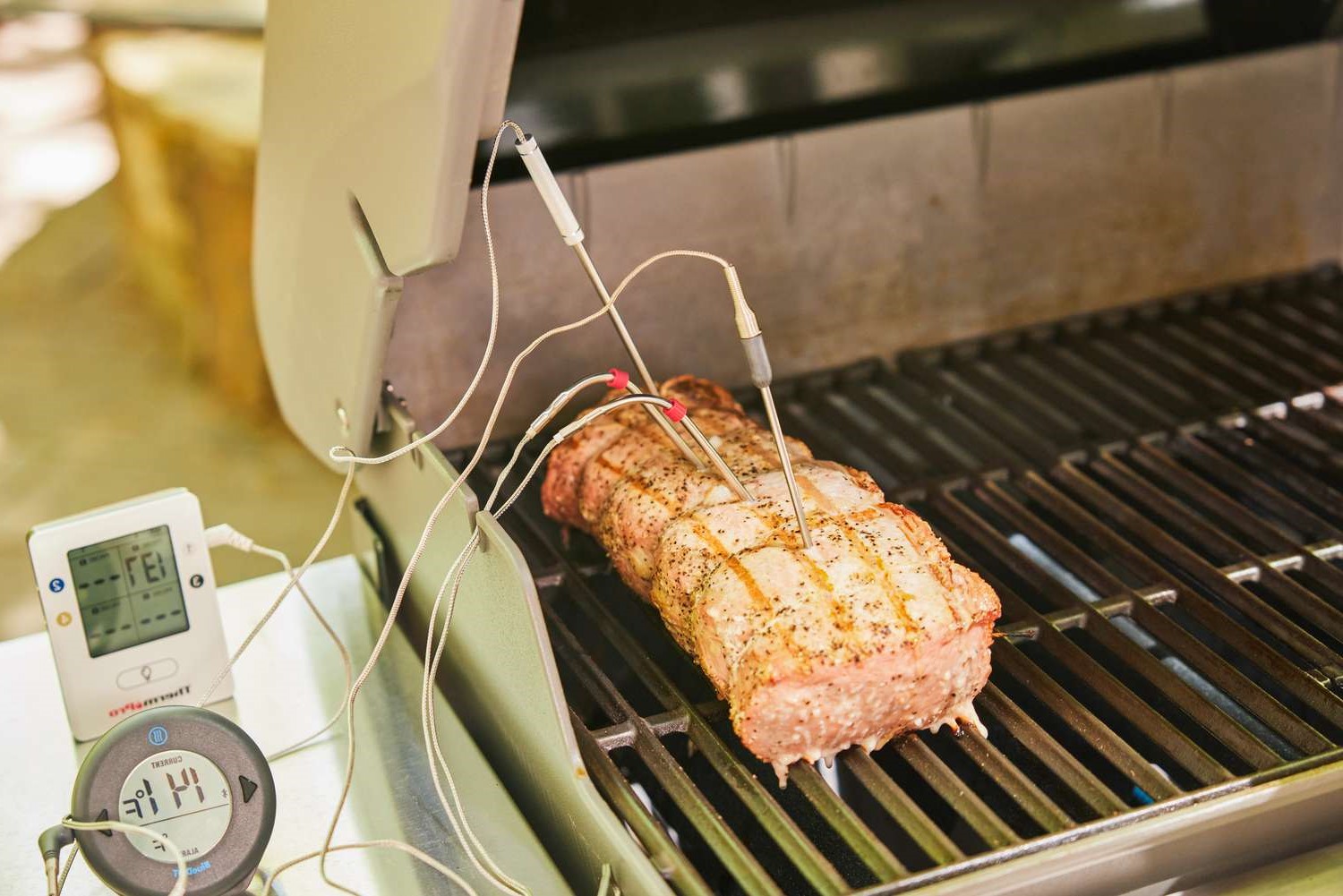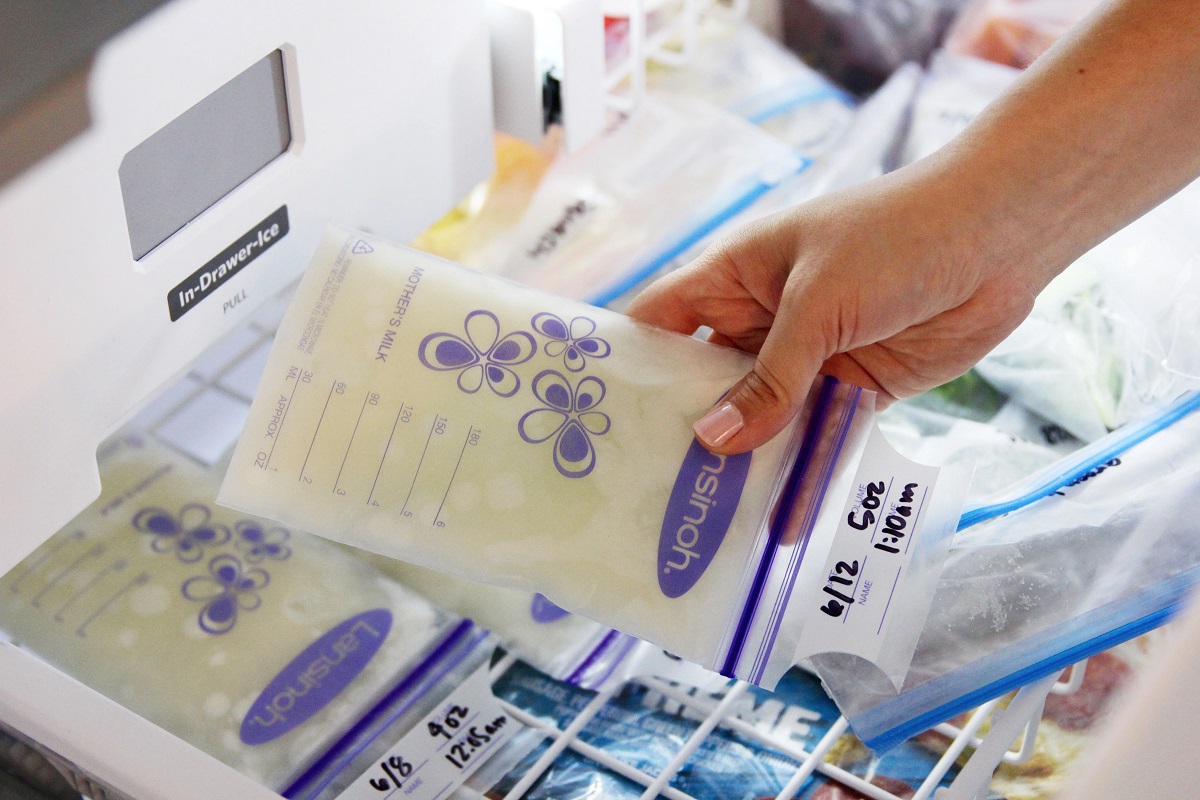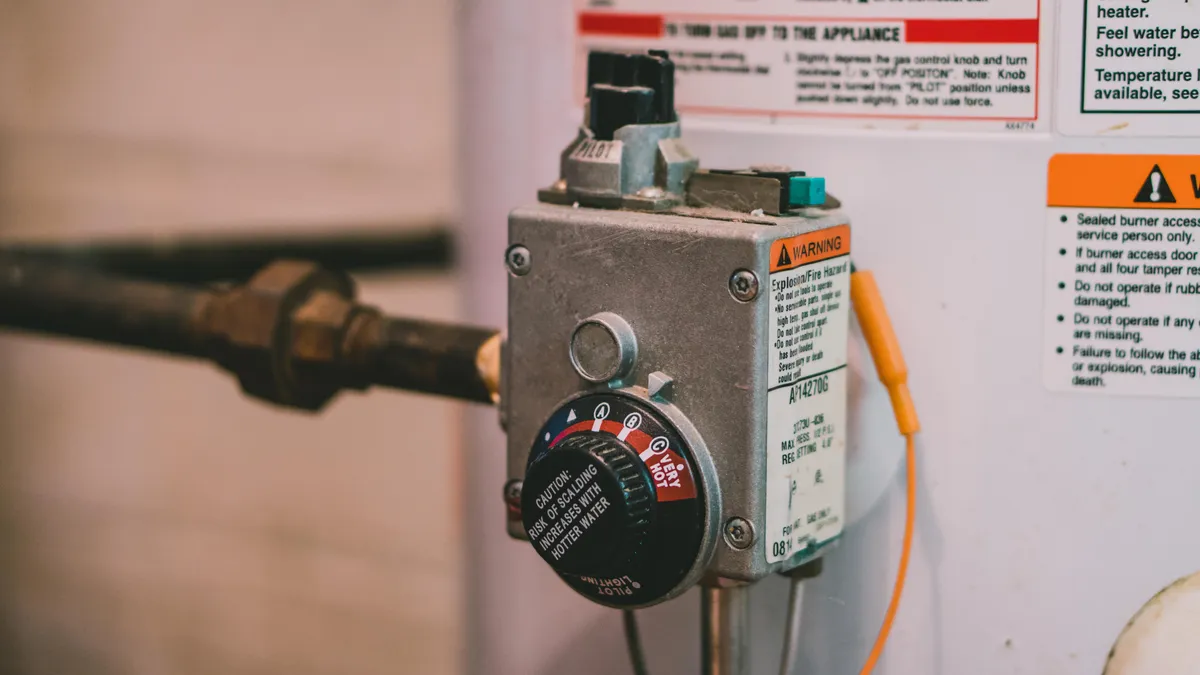Home>Health & Nutrition>Understanding Infant Rectal Temperatures: Importance And Guidelines


Health & Nutrition
Understanding Infant Rectal Temperatures: Importance And Guidelines
Published: February 19, 2024
Learn the importance and guidelines for taking infant rectal temperatures. Ensure your baby's health and nutrition with proper temperature monitoring.
(Many of the links in this article redirect to a specific reviewed product. Your purchase of these products through affiliate links helps to generate commission for Temperatures.com, at no extra cost. Learn more)
Table of Contents
The Significance of Infant Rectal Temperatures
Infant rectal temperatures play a crucial role in monitoring the health and well-being of babies. Unlike oral or axillary temperature measurements, rectal temperatures provide the most accurate reflection of a baby's internal body temperature. This is due to the proximity of the rectum to the body's core, allowing for a more precise assessment of the infant's overall temperature regulation.
Maintaining an optimal body temperature is essential for infants, as their developing bodies are more susceptible to temperature fluctuations. By regularly monitoring rectal temperatures, caregivers can promptly identify any deviations from the normal range, enabling timely intervention to prevent potential health complications.
Moreover, rectal temperatures are particularly significant in assessing fever in infants. Fever is often an early indicator of an underlying infection or illness. In infants, a fever can be a cause for concern, as their immune systems are still developing and may not effectively combat infections. Therefore, accurate measurement and interpretation of rectal temperatures are vital for identifying febrile conditions and initiating appropriate medical care.
In addition, rectal temperatures serve as a valuable tool for healthcare providers in diagnosing and monitoring various pediatric conditions. By obtaining precise temperature readings, healthcare professionals can make informed decisions regarding the management of illnesses, such as determining the effectiveness of treatment interventions or identifying potential complications.
Overall, understanding the significance of infant rectal temperatures is paramount for ensuring the well-being of babies. By recognizing the importance of this vital sign, caregivers and healthcare providers can actively monitor infants' health status, detect early signs of illness, and provide timely interventions, ultimately contributing to the optimal care and protection of the youngest members of our communities.
Factors Affecting Infant Rectal Temperatures
Several factors can influence infant rectal temperatures, contributing to variations in readings and impacting the accuracy of temperature assessments. It is essential for caregivers and healthcare providers to be aware of these factors to ensure the reliable interpretation of rectal temperature measurements.
-
External Environment: The ambient temperature of the surroundings can significantly affect an infant's body temperature. Exposure to extreme heat or cold can lead to fluctuations in rectal temperatures. It is crucial to maintain a comfortable and stable environment for infants to prevent environmental temperature extremes from impacting their body temperature regulation.
-
Clothing and Swaddling: The type and amount of clothing worn by an infant can influence their body temperature. Over-bundling or inadequate clothing can lead to inaccurate temperature readings. Caregivers should ensure that infants are appropriately dressed for the ambient temperature to prevent clothing-related temperature fluctuations.
-
Physical Activity: Infants' physical activity levels can impact their body temperature. Engaging in vigorous movements or being excessively active may elevate their rectal temperatures. Conversely, prolonged periods of inactivity or sedentary behavior can lead to a decrease in body temperature. Monitoring infants' activity levels and allowing them to engage in age-appropriate physical movements can help maintain their body temperature within the normal range.
-
Feeding and Hydration: The timing and adequacy of feeding and hydration can affect infant body temperature. Hunger or dehydration may lead to a decrease in body temperature, while overfeeding can result in a temporary increase. Ensuring that infants are adequately nourished and hydrated is essential for maintaining stable body temperatures.
-
Illness and Infections: Underlying illnesses, infections, or inflammatory conditions can significantly impact infant rectal temperatures. Fever, a common symptom of infections, can elevate body temperature. It is crucial to monitor infants closely during illness and seek medical attention if abnormal rectal temperatures persist or are accompanied by other concerning symptoms.
-
Medications and Vaccinations: Certain medications and vaccinations can influence infant body temperature. Some medications may cause a temporary increase or decrease in body temperature as a side effect. Additionally, post-vaccination reactions can lead to transient changes in rectal temperatures. Caregivers should be aware of the potential effects of medications and vaccinations on infant body temperature and follow healthcare providers' guidance.
Understanding the various factors affecting infant rectal temperatures is essential for accurate temperature assessment and interpretation. By considering these influencing variables, caregivers and healthcare providers can ensure that rectal temperature measurements reflect the infant's true physiological state, enabling appropriate interventions and care decisions.
Guidelines for Taking Infant Rectal Temperatures
Taking an infant's rectal temperature requires careful attention to ensure accurate and reliable measurements. Follow these guidelines to effectively and safely obtain rectal temperature readings for infants:
-
Use a Digital Thermometer: Select a digital thermometer specifically designed for rectal temperature measurements. Digital thermometers offer quick and precise readings, making them suitable for assessing infant temperatures.
-
Clean the Thermometer: Before and after each use, clean the thermometer with soap and water or rubbing alcohol to maintain hygiene and prevent the spread of germs. Ensure that the thermometer is thoroughly dry before use.
-
Position the Infant: Lay the infant on their back and gently secure their legs, creating a stable and comfortable position for taking the rectal temperature. Use a soothing voice and gentle touch to reassure the infant during the process.
-
Apply Lubrication: Apply a small amount of water-based lubricant to the thermometer's tip to facilitate smooth insertion and minimize discomfort for the infant. Avoid using petroleum-based products, as they can damage the thermometer and cause irritation.
-
Insert the Thermometer: Gently insert the lubricated thermometer tip into the infant's rectum, following the manufacturer's guidelines for depth and angle. Hold the thermometer in place while ensuring minimal movement to obtain an accurate reading.
-
Wait for the Reading: Allow the thermometer to register the temperature for the recommended duration, typically indicated by a beep or visual cue. Maintain a comforting presence for the infant during this time to minimize any potential distress.
-
Record the Temperature: Once the thermometer provides the reading, carefully remove it from the infant's rectum and note the temperature. Record the exact measurement, including the time and date, to track the infant's temperature trends and share the information with healthcare providers if necessary.
-
Clean and Store the Thermometer: Clean the thermometer again after use and store it in a secure and hygienic location, ready for the next temperature assessment.
By adhering to these guidelines, caregivers can ensure the safe and accurate measurement of infant rectal temperatures. It is essential to approach this process with care, patience, and attention to detail to minimize discomfort for the infant and obtain reliable temperature readings for monitoring their health and well-being.
Interpreting Infant Rectal Temperatures
Interpreting infant rectal temperatures is a critical aspect of pediatric care, as it provides valuable insights into the infant's health status and aids in identifying potential concerns. When assessing rectal temperatures in infants, it is essential to consider the normal temperature range and recognize deviations that may indicate underlying health issues.
The normal range for infant rectal temperatures typically falls between 97.9°F (36.6°C) and 100.4°F (38°C). Temperatures within this range are generally considered normal, reflecting the infant's stable body temperature. However, it is important to note that individual variations may occur, and healthcare providers often emphasize the significance of knowing the infant's baseline temperature when interpreting readings.
Elevated rectal temperatures in infants, commonly defined as exceeding 100.4°F (38°C), often indicate the presence of a fever. Fever in infants is a cause for concern due to their developing immune systems and increased vulnerability to infections. When an infant presents with a fever, caregivers and healthcare providers should closely monitor the infant's overall condition and consider additional symptoms or signs of distress.
Conversely, abnormally low rectal temperatures, below 97.9°F (36.6°C), may signal hypothermia or a potential decrease in the infant's body temperature. Hypothermia can pose significant risks to infants, impacting their physiological functions and requiring prompt intervention to restore normal body temperature.
Interpreting infant rectal temperatures also involves considering the context in which the temperature measurement occurs. For instance, if an infant has been exposed to extreme environmental temperatures, engaged in vigorous physical activity, or experienced fluctuations in feeding patterns, these factors may influence the interpretation of rectal temperature readings.
Furthermore, healthcare providers often emphasize the importance of assessing rectal temperatures in conjunction with other clinical indicators and the infant's overall behavior and well-being. By integrating temperature assessments with a comprehensive evaluation of the infant's condition, healthcare professionals can make informed decisions regarding the appropriate course of action, such as seeking medical attention, implementing comfort measures, or initiating further diagnostic evaluations.
In summary, interpreting infant rectal temperatures requires a holistic approach that considers the normal temperature range, individual variations, and contextual factors. By vigilantly monitoring and interpreting rectal temperatures in infants, caregivers and healthcare providers can promptly identify deviations from the norm, address potential health concerns, and prioritize the well-being of the youngest members of our communities.
When to Seek Medical Attention for Abnormal Infant Rectal Temperatures
Recognizing the appropriate circumstances to seek medical attention for abnormal infant rectal temperatures is paramount for safeguarding the health and well-being of the youngest members of our communities. Caregivers and parents should remain vigilant and responsive to deviations from the normal temperature range, as timely intervention can mitigate potential health risks and ensure optimal care for infants.
Fever Management
When an infant exhibits a rectal temperature exceeding 100.4°F (38°C), it is crucial to initiate appropriate fever management measures. If the infant is younger than three months and presents with a fever, immediate medical attention is warranted, as febrile conditions in this age group can signify severe infections that necessitate prompt evaluation and treatment by healthcare professionals. For infants aged three to six months, persistent or high fevers should also prompt a consultation with a healthcare provider to assess the underlying cause and determine the most suitable course of action.
Hypothermia Concerns
Conversely, abnormally low rectal temperatures, below 97.9°F (36.6°C), can indicate hypothermia in infants. If an infant displays signs of hypothermia, such as cold extremities, lethargy, or decreased responsiveness, seeking medical attention is imperative. Hypothermic conditions in infants require immediate evaluation and intervention to restore normal body temperature and prevent potential complications associated with decreased body heat.
Persistent or Alarming Symptoms
In cases where abnormal rectal temperatures are accompanied by persistent or alarming symptoms, such as excessive irritability, difficulty breathing, persistent vomiting, or signs of dehydration, caregivers should promptly seek medical attention. These symptoms may indicate underlying health issues that require thorough assessment and management by healthcare professionals to ensure the infant's well-being.
Trusting Caregiver Instincts
Caregivers should trust their instincts and seek medical attention if they have concerns about an infant's rectal temperatures, even if the readings fall within the normal range. Intuitive parental or caregiver instincts often play a crucial role in identifying subtle changes in an infant's health status. If caregivers sense that something is amiss or observe concerning signs, consulting a healthcare provider for further evaluation and guidance is essential.
Read more: Rectal Temperatures Indicating Hyperthermia
Consultation with Healthcare Providers
Ultimately, any uncertainty or unease regarding an infant's rectal temperatures warrants consultation with healthcare providers. Whether it involves seeking guidance on fever management, addressing hypothermia concerns, or discussing accompanying symptoms, open communication with healthcare professionals can provide reassurance and ensure that infants receive the necessary care and attention to safeguard their health.
By remaining attentive to abnormal rectal temperatures and promptly seeking medical attention when necessary, caregivers and parents can play a pivotal role in promoting the well-being of infants and fostering a proactive approach to pediatric healthcare. Vigilance, timely intervention, and open communication with healthcare providers are fundamental in ensuring that infants receive the best possible care in response to abnormal rectal temperatures.













